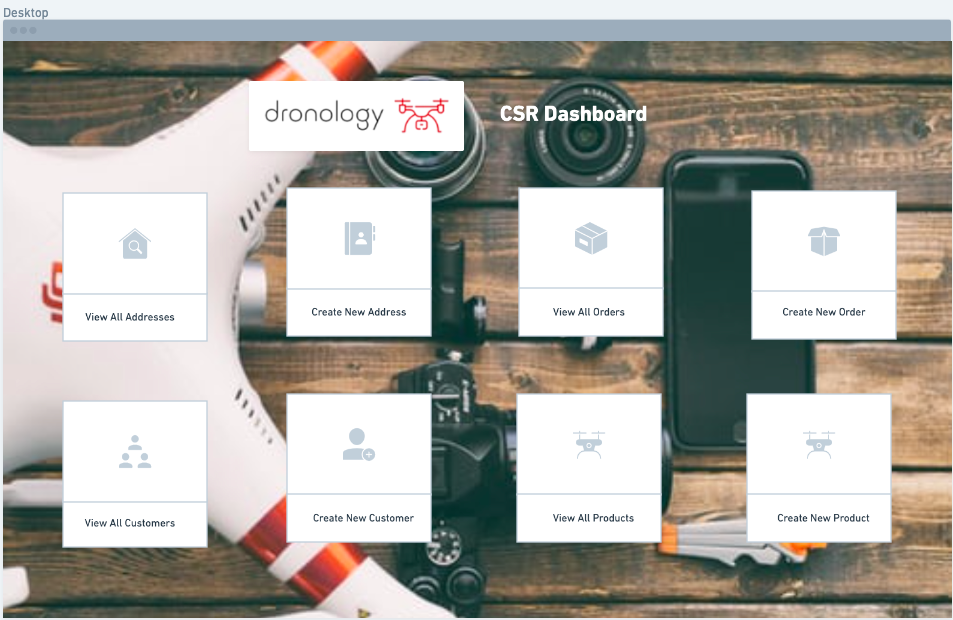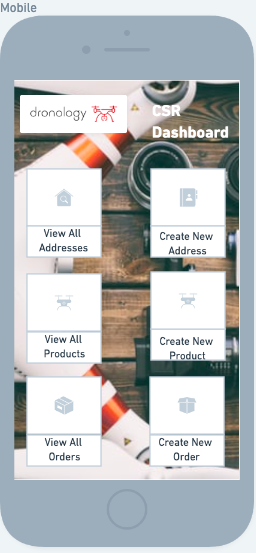To amplify the productivity of customer service representatives (CSR). You will create an application that allows CSRs to create and modify both customers and their orders, search a product catalog against which orders can be created, and manage the functional lifecycle of all orders.
- Backend (API):
- Express/Node.js
- Sequelize
- Frontend:
- React with axios
- Wireframing: Figma is recommended
- Backend (Database):
- MySQL
- CI/CD:
- Github actions will be used for CI/CD pipelines
- Deployment: Heroku for both front-end and API
- Customer calls in an order
- CSR adds Customer if not existing
- CSR edits Customer as needed
- CSR creates an Order
- Add Product(s)
- Check if available
- Add if so
- CSR informs shipping to assemble and ship the Order
- Shipping collects Products in Order
- Conditional at any point prior to shipping: Customer calls in to modify existing Order
- Order is shipped
- Order arrives
- Shipping agent informs CSR
- Order is closed
- Can't add a Product if none available
- Can't modify an Order that has been shipped
- Can't close out an Order without confirmation that Order arrived as expected
- Customers
- id (PK)
- first_name
- middle_name
- last_name
- phone
- customer_notes
- address_id (FK)
- Orders
- id (PK)
- customer_id (FK)
- order_status (Draft/Open/Finalized/Preparing to ship/Ready for shipping/Shipped/Delivered/Closed)
- datetime_order_placed
- total_order_price
- order_notes
- Products
- id (PK)
- product_SKU
- product_price
- product_name
- product_quantity
- product_description
- Addresses
- id (PK)
- address_line_1
- address_line_2
- city
- state
- zip
The above listing of data fields is not necessarily comprehensive. You'll also observe that a real database schema is only hinted at. This is not a prescriptive data model, and it's a fact of software development that data models change over time; that's why there is an entire art of schema migrations. One thing clearly lacking from the above is a means by which to link together the customers, orders, and products.
- Perform CRUD operations for Orders, including the ability to interactively add products from the Product catalog to an order that is in progress
- There must be the ability to save an Order as a draft
- Tie the order to a Customer
- Browse the product catalog (as a CSR adds or removes products from an order, the product count needs to be updated)
- Browse the customer database
- Track and change the shipping status of the order
| Method | URLs | Actions |
|---|---|---|
| GET | api/customers | Get all customers |
| GET | api/customers/:id | Get specific customer |
| POST | api/customers | Create new customer |
| PUT | api/customers/:id | Modify existing customer |
| DELETE | api/customers/:id | Remove customer (data compliance/right to be forgotten) |
| GET | api/orders | Get all orders |
| GET | api/orders/:id | Get specific order |
| POST | api/orders | Create new order (think about how to differentiate between draft and live orders) |
| PUT | api/orders/:id | Modify existing order |
| DELETE | api/orders/:id | Delete a draft order (shouldn't allow for deletion of live orders) |
| GET | api/products | Get all products |
| GET | api/products/:id | Get specific product |
| PUT | api/products/:id | Increment/Decrement product inventory |
Faking data for the dB: http://marak.github.io/faker.js/ Data types for Sequelize: https://sequelize.org/v5/manual/data-types.html Manual for Sequelize migrations: https://sequelize.org/v3/docs/migrations/ Great example of migrations in Express app: https://developers.decoded.africa/index.php/2020/07/30/how-to-setup-a-node-express-js-project-with-sequelize-cli/



